MADALENA SANTOS REINBOLT AT MASP: UNA CABEZA LLENA DE PLANETAS
The exhibition Madalena Santos Reinbolt: una cabeza llena de planetas (A head full of planets) is the first solo exhibition of the Brazilian artist at the Museu de Arte de São Paulo.
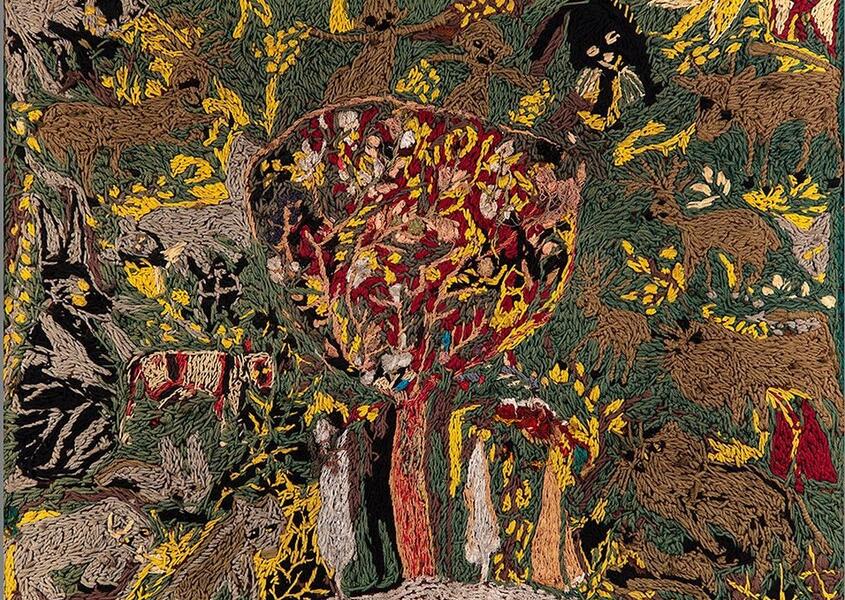
Madalena Santos Reinbolt: una cabeza llena de planetas brings together 44 works, including paintings and tapestries, and is accompanied by an editorial publication entirely devoted to the artist, with images and unpublished essays.
Although she also worked in painting, the artist is known for her complex embroideries constructed with hundreds of vibrantly colored threads, the so-called "wool frames". In them, Reinbolt depicted daily life in the countryside and in the city, full of black characters in meetings, parties, celebrations, religiosities, collective meals.
The solo exhibition is part of MASP's biennial program dedicated to Brazilian Histories (2021-22), on the occasion of the bicentennial of Brazil's independence in 2022. This year, the program also includes solo exhibitions by Judith Lauand and Cinthia Marcelle.
Despite her rich and unique output, Santos Reinbolt produced outside the traditional art circuits of her time, and only in recent years has his work begun to attract more attention. Even today, there is still a great silence in museums and art spaces about the pioneering nature of his production, something that the MASP show hopes to diminish, establishing a debate around her history and contribution to Brazilian art.
-
Vistas de la exhibición. Cortesía MASP. Foto: Isabella Matheus.
-
Vistas de la exhibición. Cortesía MASP. Foto: Isabella Matheus.
-
Vistas de la exhibición. Cortesía MASP. Foto: Isabella Matheus.
-
Madalena Santos Reinbolt. Sem título, 1969-1977. Cortesía MASP.
-
Madalena Santos Reinbolt. Sem título, 1969-1977. Cortesía MASP.
-
Madalena Santos Reinbolt. Sem título, 1969-1977. Cortesía MASP.
-
Madalena Santos Reinbolt. Árvore do Pai Bié, 1974. Cortesía MASP.
-
Vistas de la exhibición. Cortesía MASP. Foto: Isabella Matheus.
-
Vistas de la exhibición. Cortesía MASP. Foto: Isabella Matheus.
Santos Reinbolt grew up on a small farm with her family, where she had her first contacts with embroidery, weaving, ceramics and painting in childhood. In 1949, at the beginning of her adult life, Santos Reinbolt arrived in Petrópolis, where she worked at the Samambaia farm, residence of architect Lota Macedo Soares (1910-1967) and wife, American writer Elizabeth Bishop (1911-1979).
Although linked from an early age to the creative exercise, it was not until the 1950s that the artist began to devote herself to painting, tracing synthetic figures with expressive brushstrokes and using fragile supports, such as paper or straw, indicating the importance of materiality in her production.
In the late 1960s, Santos Reinbolt began to produce her unique and pioneering "wool paintings", made with 154 needles, in different colors, like a palette of ink, which the artist printed on burlap or canvas. The needle, in his practice, thus becomes an extension of the hand, like the brush in painting.
Related Topics
May interest you
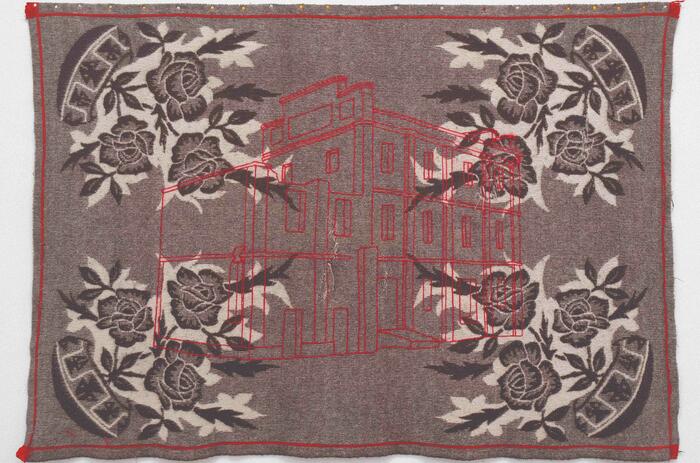
Colombian artist Rosario López presents Tapizar el paisaje in Marli Matsumoto Arte Contemporânea. The exhibition comprises an artistic study in which territory is seen as material with a play on the viewer’s perception, shaping the unseen or creating a light construction out of a heavy geological formation.
TAPIZAR EL PAISAJE: ROSARIO LÓPEZ’S EXHIBITION IN MARLI MATSUMOTO

Colombian artist Rosario López presents Tapizar el paisaje in Marli Matsumoto Arte Contemporânea. The exhibition comprises an artistic study in which territory is seen as material with a play on the viewer’s perception, shaping the unseen or creating a light construction out of a heavy geological formation.
TAPIZAR EL PAISAJE: ROSARIO LÓPEZ’S EXHIBITION IN MARLI MATSUMOTO
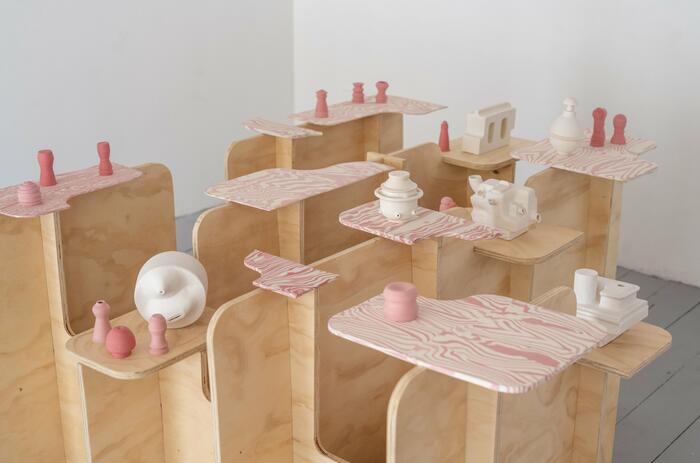
Colección Desconocida (Unknown Collection), exhibited at NAC Gallery, is a display of pieces that allude to functional objects that are impossible to classify, the result of the exhaustive work of artists Antonia Bañados and Rocío Olivares.

The Museo de Arte de Zapopan presents designers from Liberal Youth Ministry and Dream Baby! in an exhibition that is part of the fifth edition of the museum's Contemporary Fashion and Design program.
EN LA NOCHE DE LA MATERIA, FLORECE. THE SHOW IN MUSEO THE ARTE DE ZAPOPAN
The Museo de Arte de Zapopan presents designers from Liberal Youth Ministry and Dream Baby! in an exhibition that is part of the fifth edition of the museum's Contemporary Fashion and Design program.
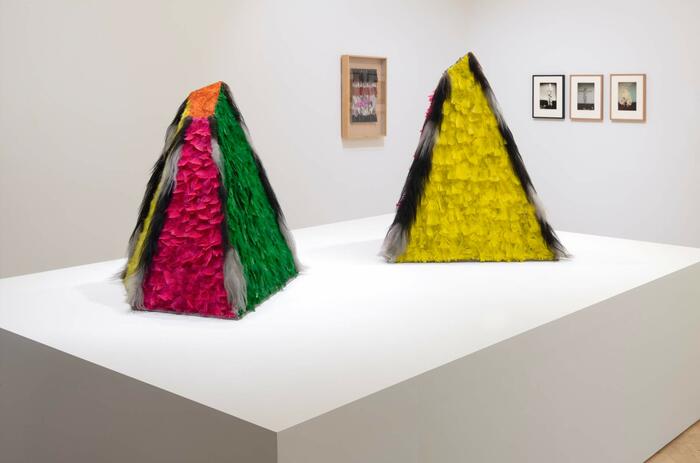
Museo Tamayo opens the exhibition Raphael Montañez Ortiz: A Contextual Retrospective, the first large-scale exhibition dedicated to the artist, activist and educator. It gets together his work produced from the 1950s to the early 2020s in different media such as film, painting, photography, video installation, documents and assemblages.
A CONTEXTUAL RETROSPECTIVE OF RAPHAEL MONTAÑEZ ORTIZ
Museo Tamayo opens the exhibition Raphael Montañez Ortiz: A Contextual Retrospective, the first large-scale exhibition dedicated to the artist, activist and educator. It gets together his work produced from the 1950s to the early 2020s in different media such as film, painting, photography, video installation, documents and assemblages.
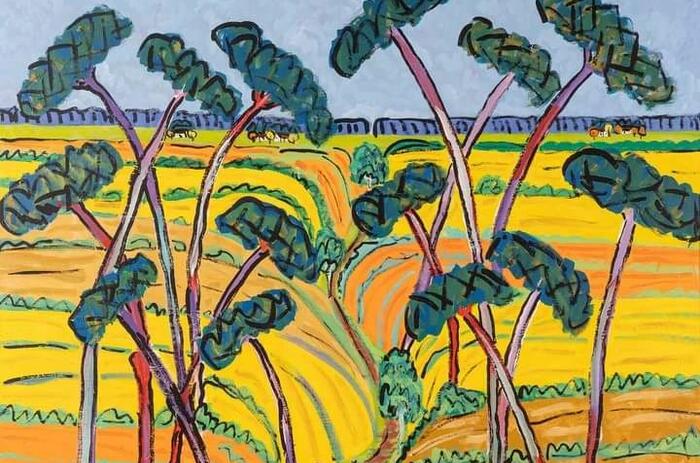
"Giacoya" is the first solo exhibition of Floridian artist Mario Giacoya (1951) at the National Museum of Visual Arts (MNAV).
MARIO GIACOYA AT THE NATIONAL MUSEUM OF VISUAL ARTS OF URUGUAY
"Giacoya" is the first solo exhibition of Floridian artist Mario Giacoya (1951) at the National Museum of Visual Arts (MNAV).

The 13th edition of the Mercosul Biennial, anchored in the Trauma, dream and flight tripod and finished last November, had encouraging developments, especially due to the outstanding presence of emerging artists, the strong contact with the public and the resumption of powerful spaces and traditional attractions of the event, such as the Cais do Porto. However, there were problems in the organization of the exhibition, the most serious episode of which was the '(dis)invitation' of names to exhibit works, and a certain frustration with pieces that would have a technological appeal.
ABALOS AUSTRALIS - 13TH MERCOSUR BIENNIAL - TRAUMA, DREAM AND ESCAPE
The 13th edition of the Mercosul Biennial, anchored in the Trauma, dream and flight tripod and finished last November, had encouraging developments, especially due to the outstanding presence of emerging artists, the strong contact with the public and the resumption of powerful spaces and traditional attractions of the event, such as the Cais do Porto. However, there were problems in the organization of the exhibition, the most serious episode of which was the '(dis)invitation' of names to exhibit works, and a certain frustration with pieces that would have a technological appeal.
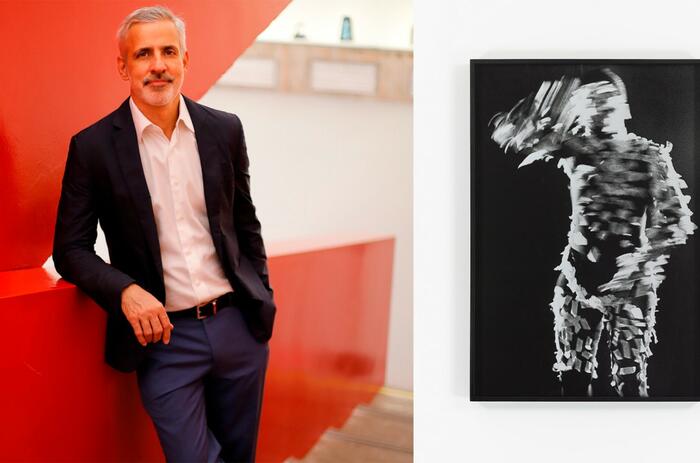
The Center for Curatorial Studies, Bard College (CCS Bard) announced that Adriano Pedrosa, Artistic Director of Museu de Arte de São Paulo Assis Chateaubriand (MASP), will receive the 2023 Audrey Irmas Award for Curatorial Excellence.
ADRIANO PEDROSA WILL RECEIVE THE 2023 AUDREY IRMAS AWARD FOR CURATORIAL EXCELLENCE
The Center for Curatorial Studies, Bard College (CCS Bard) announced that Adriano Pedrosa, Artistic Director of Museu de Arte de São Paulo Assis Chateaubriand (MASP), will receive the 2023 Audrey Irmas Award for Curatorial Excellence.

The first solo exhibition in the United States of the afro-brazilian artist Arthur Bispo. Co-curated by Aimé Iglesias Lukin, Ricardo Resende, and Javier Téllez, with Tie Jojima.
AMERICAS SOCIETY PRESENTS BISPO DO ROSARIO: ALL EXISTING MATERIALS ON EARTH
The first solo exhibition in the United States of the afro-brazilian artist Arthur Bispo. Co-curated by Aimé Iglesias Lukin, Ricardo Resende, and Javier Téllez, with Tie Jojima.
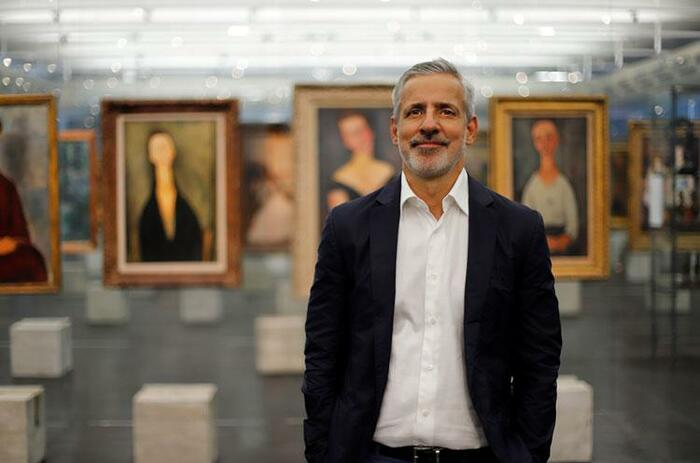
The Board of La Biennale di Venezia appointed Adriano Pedrosa as Director of the Visual Arts Sector, with the specific task of curating the 60th International Art Exhibition to be held in 2024 (from April 20th to November 24th).
ADRIANO PEDROSA IS THE APPOINTED CURATOR OF THE VENEZIA BIENNALE ARTE 2024
The Board of La Biennale di Venezia appointed Adriano Pedrosa as Director of the Visual Arts Sector, with the specific task of curating the 60th International Art Exhibition to be held in 2024 (from April 20th to November 24th).

Colombian artist Rosario López presents Tapizar el paisaje in Marli Matsumoto Arte Contemporânea. The exhibition comprises an artistic study in which territory is seen as material with a play on the viewer’s perception, shaping the unseen or creating a light construction out of a heavy geological formation.
TAPIZAR EL PAISAJE: ROSARIO LÓPEZ’S EXHIBITION IN MARLI MATSUMOTO

Colección Desconocida (Unknown Collection), exhibited at NAC Gallery, is a display of pieces that allude to functional objects that are impossible to classify, the result of the exhaustive work of artists Antonia Bañados and Rocío Olivares.

The Museo de Arte de Zapopan presents designers from Liberal Youth Ministry and Dream Baby! in an exhibition that is part of the fifth edition of the museum's Contemporary Fashion and Design program.
EN LA NOCHE DE LA MATERIA, FLORECE. THE SHOW IN MUSEO THE ARTE DE ZAPOPAN
The Museo de Arte de Zapopan presents designers from Liberal Youth Ministry and Dream Baby! in an exhibition that is part of the fifth edition of the museum's Contemporary Fashion and Design program.

Museo Tamayo opens the exhibition Raphael Montañez Ortiz: A Contextual Retrospective, the first large-scale exhibition dedicated to the artist, activist and educator. It gets together his work produced from the 1950s to the early 2020s in different media such as film, painting, photography, video installation, documents and assemblages.
A CONTEXTUAL RETROSPECTIVE OF RAPHAEL MONTAÑEZ ORTIZ
Museo Tamayo opens the exhibition Raphael Montañez Ortiz: A Contextual Retrospective, the first large-scale exhibition dedicated to the artist, activist and educator. It gets together his work produced from the 1950s to the early 2020s in different media such as film, painting, photography, video installation, documents and assemblages.

"Giacoya" is the first solo exhibition of Floridian artist Mario Giacoya (1951) at the National Museum of Visual Arts (MNAV).
MARIO GIACOYA AT THE NATIONAL MUSEUM OF VISUAL ARTS OF URUGUAY
"Giacoya" is the first solo exhibition of Floridian artist Mario Giacoya (1951) at the National Museum of Visual Arts (MNAV).

The 13th edition of the Mercosul Biennial, anchored in the Trauma, dream and flight tripod and finished last November, had encouraging developments, especially due to the outstanding presence of emerging artists, the strong contact with the public and the resumption of powerful spaces and traditional attractions of the event, such as the Cais do Porto. However, there were problems in the organization of the exhibition, the most serious episode of which was the '(dis)invitation' of names to exhibit works, and a certain frustration with pieces that would have a technological appeal.
ABALOS AUSTRALIS - 13TH MERCOSUR BIENNIAL - TRAUMA, DREAM AND ESCAPE
The 13th edition of the Mercosul Biennial, anchored in the Trauma, dream and flight tripod and finished last November, had encouraging developments, especially due to the outstanding presence of emerging artists, the strong contact with the public and the resumption of powerful spaces and traditional attractions of the event, such as the Cais do Porto. However, there were problems in the organization of the exhibition, the most serious episode of which was the '(dis)invitation' of names to exhibit works, and a certain frustration with pieces that would have a technological appeal.

The Center for Curatorial Studies, Bard College (CCS Bard) announced that Adriano Pedrosa, Artistic Director of Museu de Arte de São Paulo Assis Chateaubriand (MASP), will receive the 2023 Audrey Irmas Award for Curatorial Excellence.
ADRIANO PEDROSA WILL RECEIVE THE 2023 AUDREY IRMAS AWARD FOR CURATORIAL EXCELLENCE
The Center for Curatorial Studies, Bard College (CCS Bard) announced that Adriano Pedrosa, Artistic Director of Museu de Arte de São Paulo Assis Chateaubriand (MASP), will receive the 2023 Audrey Irmas Award for Curatorial Excellence.

The first solo exhibition in the United States of the afro-brazilian artist Arthur Bispo. Co-curated by Aimé Iglesias Lukin, Ricardo Resende, and Javier Téllez, with Tie Jojima.
AMERICAS SOCIETY PRESENTS BISPO DO ROSARIO: ALL EXISTING MATERIALS ON EARTH
The first solo exhibition in the United States of the afro-brazilian artist Arthur Bispo. Co-curated by Aimé Iglesias Lukin, Ricardo Resende, and Javier Téllez, with Tie Jojima.

The Board of La Biennale di Venezia appointed Adriano Pedrosa as Director of the Visual Arts Sector, with the specific task of curating the 60th International Art Exhibition to be held in 2024 (from April 20th to November 24th).
ADRIANO PEDROSA IS THE APPOINTED CURATOR OF THE VENEZIA BIENNALE ARTE 2024
The Board of La Biennale di Venezia appointed Adriano Pedrosa as Director of the Visual Arts Sector, with the specific task of curating the 60th International Art Exhibition to be held in 2024 (from April 20th to November 24th).

Colombian artist Rosario López presents Tapizar el paisaje in Marli Matsumoto Arte Contemporânea. The exhibition comprises an artistic study in which territory is seen as material with a play on the viewer’s perception, shaping the unseen or creating a light construction out of a heavy geological formation.
TAPIZAR EL PAISAJE: ROSARIO LÓPEZ’S EXHIBITION IN MARLI MATSUMOTO

Colección Desconocida (Unknown Collection), exhibited at NAC Gallery, is a display of pieces that allude to functional objects that are impossible to classify, the result of the exhaustive work of artists Antonia Bañados and Rocío Olivares.

The Museo de Arte de Zapopan presents designers from Liberal Youth Ministry and Dream Baby! in an exhibition that is part of the fifth edition of the museum's Contemporary Fashion and Design program.
EN LA NOCHE DE LA MATERIA, FLORECE. THE SHOW IN MUSEO THE ARTE DE ZAPOPAN
The Museo de Arte de Zapopan presents designers from Liberal Youth Ministry and Dream Baby! in an exhibition that is part of the fifth edition of the museum's Contemporary Fashion and Design program.

Museo Tamayo opens the exhibition Raphael Montañez Ortiz: A Contextual Retrospective, the first large-scale exhibition dedicated to the artist, activist and educator. It gets together his work produced from the 1950s to the early 2020s in different media such as film, painting, photography, video installation, documents and assemblages.
A CONTEXTUAL RETROSPECTIVE OF RAPHAEL MONTAÑEZ ORTIZ
Museo Tamayo opens the exhibition Raphael Montañez Ortiz: A Contextual Retrospective, the first large-scale exhibition dedicated to the artist, activist and educator. It gets together his work produced from the 1950s to the early 2020s in different media such as film, painting, photography, video installation, documents and assemblages.

"Giacoya" is the first solo exhibition of Floridian artist Mario Giacoya (1951) at the National Museum of Visual Arts (MNAV).
MARIO GIACOYA AT THE NATIONAL MUSEUM OF VISUAL ARTS OF URUGUAY
"Giacoya" is the first solo exhibition of Floridian artist Mario Giacoya (1951) at the National Museum of Visual Arts (MNAV).

The 13th edition of the Mercosul Biennial, anchored in the Trauma, dream and flight tripod and finished last November, had encouraging developments, especially due to the outstanding presence of emerging artists, the strong contact with the public and the resumption of powerful spaces and traditional attractions of the event, such as the Cais do Porto. However, there were problems in the organization of the exhibition, the most serious episode of which was the '(dis)invitation' of names to exhibit works, and a certain frustration with pieces that would have a technological appeal.
ABALOS AUSTRALIS - 13TH MERCOSUR BIENNIAL - TRAUMA, DREAM AND ESCAPE
The 13th edition of the Mercosul Biennial, anchored in the Trauma, dream and flight tripod and finished last November, had encouraging developments, especially due to the outstanding presence of emerging artists, the strong contact with the public and the resumption of powerful spaces and traditional attractions of the event, such as the Cais do Porto. However, there were problems in the organization of the exhibition, the most serious episode of which was the '(dis)invitation' of names to exhibit works, and a certain frustration with pieces that would have a technological appeal.

The Center for Curatorial Studies, Bard College (CCS Bard) announced that Adriano Pedrosa, Artistic Director of Museu de Arte de São Paulo Assis Chateaubriand (MASP), will receive the 2023 Audrey Irmas Award for Curatorial Excellence.
ADRIANO PEDROSA WILL RECEIVE THE 2023 AUDREY IRMAS AWARD FOR CURATORIAL EXCELLENCE
The Center for Curatorial Studies, Bard College (CCS Bard) announced that Adriano Pedrosa, Artistic Director of Museu de Arte de São Paulo Assis Chateaubriand (MASP), will receive the 2023 Audrey Irmas Award for Curatorial Excellence.

The first solo exhibition in the United States of the afro-brazilian artist Arthur Bispo. Co-curated by Aimé Iglesias Lukin, Ricardo Resende, and Javier Téllez, with Tie Jojima.
AMERICAS SOCIETY PRESENTS BISPO DO ROSARIO: ALL EXISTING MATERIALS ON EARTH
The first solo exhibition in the United States of the afro-brazilian artist Arthur Bispo. Co-curated by Aimé Iglesias Lukin, Ricardo Resende, and Javier Téllez, with Tie Jojima.

The Board of La Biennale di Venezia appointed Adriano Pedrosa as Director of the Visual Arts Sector, with the specific task of curating the 60th International Art Exhibition to be held in 2024 (from April 20th to November 24th).
ADRIANO PEDROSA IS THE APPOINTED CURATOR OF THE VENEZIA BIENNALE ARTE 2024
The Board of La Biennale di Venezia appointed Adriano Pedrosa as Director of the Visual Arts Sector, with the specific task of curating the 60th International Art Exhibition to be held in 2024 (from April 20th to November 24th).

Colombian artist Rosario López presents Tapizar el paisaje in Marli Matsumoto Arte Contemporânea. The exhibition comprises an artistic study in which territory is seen as material with a play on the viewer’s perception, shaping the unseen or creating a light construction out of a heavy geological formation.
TAPIZAR EL PAISAJE: ROSARIO LÓPEZ’S EXHIBITION IN MARLI MATSUMOTO

Colección Desconocida (Unknown Collection), exhibited at NAC Gallery, is a display of pieces that allude to functional objects that are impossible to classify, the result of the exhaustive work of artists Antonia Bañados and Rocío Olivares.

The Museo de Arte de Zapopan presents designers from Liberal Youth Ministry and Dream Baby! in an exhibition that is part of the fifth edition of the museum's Contemporary Fashion and Design program.
EN LA NOCHE DE LA MATERIA, FLORECE. THE SHOW IN MUSEO THE ARTE DE ZAPOPAN
The Museo de Arte de Zapopan presents designers from Liberal Youth Ministry and Dream Baby! in an exhibition that is part of the fifth edition of the museum's Contemporary Fashion and Design program.

Museo Tamayo opens the exhibition Raphael Montañez Ortiz: A Contextual Retrospective, the first large-scale exhibition dedicated to the artist, activist and educator. It gets together his work produced from the 1950s to the early 2020s in different media such as film, painting, photography, video installation, documents and assemblages.
A CONTEXTUAL RETROSPECTIVE OF RAPHAEL MONTAÑEZ ORTIZ
Museo Tamayo opens the exhibition Raphael Montañez Ortiz: A Contextual Retrospective, the first large-scale exhibition dedicated to the artist, activist and educator. It gets together his work produced from the 1950s to the early 2020s in different media such as film, painting, photography, video installation, documents and assemblages.

"Giacoya" is the first solo exhibition of Floridian artist Mario Giacoya (1951) at the National Museum of Visual Arts (MNAV).
MARIO GIACOYA AT THE NATIONAL MUSEUM OF VISUAL ARTS OF URUGUAY
"Giacoya" is the first solo exhibition of Floridian artist Mario Giacoya (1951) at the National Museum of Visual Arts (MNAV).

The 13th edition of the Mercosul Biennial, anchored in the Trauma, dream and flight tripod and finished last November, had encouraging developments, especially due to the outstanding presence of emerging artists, the strong contact with the public and the resumption of powerful spaces and traditional attractions of the event, such as the Cais do Porto. However, there were problems in the organization of the exhibition, the most serious episode of which was the '(dis)invitation' of names to exhibit works, and a certain frustration with pieces that would have a technological appeal.
ABALOS AUSTRALIS - 13TH MERCOSUR BIENNIAL - TRAUMA, DREAM AND ESCAPE
The 13th edition of the Mercosul Biennial, anchored in the Trauma, dream and flight tripod and finished last November, had encouraging developments, especially due to the outstanding presence of emerging artists, the strong contact with the public and the resumption of powerful spaces and traditional attractions of the event, such as the Cais do Porto. However, there were problems in the organization of the exhibition, the most serious episode of which was the '(dis)invitation' of names to exhibit works, and a certain frustration with pieces that would have a technological appeal.

The Center for Curatorial Studies, Bard College (CCS Bard) announced that Adriano Pedrosa, Artistic Director of Museu de Arte de São Paulo Assis Chateaubriand (MASP), will receive the 2023 Audrey Irmas Award for Curatorial Excellence.
ADRIANO PEDROSA WILL RECEIVE THE 2023 AUDREY IRMAS AWARD FOR CURATORIAL EXCELLENCE
The Center for Curatorial Studies, Bard College (CCS Bard) announced that Adriano Pedrosa, Artistic Director of Museu de Arte de São Paulo Assis Chateaubriand (MASP), will receive the 2023 Audrey Irmas Award for Curatorial Excellence.

The first solo exhibition in the United States of the afro-brazilian artist Arthur Bispo. Co-curated by Aimé Iglesias Lukin, Ricardo Resende, and Javier Téllez, with Tie Jojima.
AMERICAS SOCIETY PRESENTS BISPO DO ROSARIO: ALL EXISTING MATERIALS ON EARTH
The first solo exhibition in the United States of the afro-brazilian artist Arthur Bispo. Co-curated by Aimé Iglesias Lukin, Ricardo Resende, and Javier Téllez, with Tie Jojima.

The Board of La Biennale di Venezia appointed Adriano Pedrosa as Director of the Visual Arts Sector, with the specific task of curating the 60th International Art Exhibition to be held in 2024 (from April 20th to November 24th).
ADRIANO PEDROSA IS THE APPOINTED CURATOR OF THE VENEZIA BIENNALE ARTE 2024
The Board of La Biennale di Venezia appointed Adriano Pedrosa as Director of the Visual Arts Sector, with the specific task of curating the 60th International Art Exhibition to be held in 2024 (from April 20th to November 24th).

Colombian artist Rosario López presents Tapizar el paisaje in Marli Matsumoto Arte Contemporânea. The exhibition comprises an artistic study in which territory is seen as material with a play on the viewer’s perception, shaping the unseen or creating a light construction out of a heavy geological formation.
TAPIZAR EL PAISAJE: ROSARIO LÓPEZ’S EXHIBITION IN MARLI MATSUMOTO

Colección Desconocida (Unknown Collection), exhibited at NAC Gallery, is a display of pieces that allude to functional objects that are impossible to classify, the result of the exhaustive work of artists Antonia Bañados and Rocío Olivares.

The Museo de Arte de Zapopan presents designers from Liberal Youth Ministry and Dream Baby! in an exhibition that is part of the fifth edition of the museum's Contemporary Fashion and Design program.
EN LA NOCHE DE LA MATERIA, FLORECE. THE SHOW IN MUSEO THE ARTE DE ZAPOPAN
The Museo de Arte de Zapopan presents designers from Liberal Youth Ministry and Dream Baby! in an exhibition that is part of the fifth edition of the museum's Contemporary Fashion and Design program.

Museo Tamayo opens the exhibition Raphael Montañez Ortiz: A Contextual Retrospective, the first large-scale exhibition dedicated to the artist, activist and educator. It gets together his work produced from the 1950s to the early 2020s in different media such as film, painting, photography, video installation, documents and assemblages.
A CONTEXTUAL RETROSPECTIVE OF RAPHAEL MONTAÑEZ ORTIZ
Museo Tamayo opens the exhibition Raphael Montañez Ortiz: A Contextual Retrospective, the first large-scale exhibition dedicated to the artist, activist and educator. It gets together his work produced from the 1950s to the early 2020s in different media such as film, painting, photography, video installation, documents and assemblages.

"Giacoya" is the first solo exhibition of Floridian artist Mario Giacoya (1951) at the National Museum of Visual Arts (MNAV).
MARIO GIACOYA AT THE NATIONAL MUSEUM OF VISUAL ARTS OF URUGUAY
"Giacoya" is the first solo exhibition of Floridian artist Mario Giacoya (1951) at the National Museum of Visual Arts (MNAV).

The 13th edition of the Mercosul Biennial, anchored in the Trauma, dream and flight tripod and finished last November, had encouraging developments, especially due to the outstanding presence of emerging artists, the strong contact with the public and the resumption of powerful spaces and traditional attractions of the event, such as the Cais do Porto. However, there were problems in the organization of the exhibition, the most serious episode of which was the '(dis)invitation' of names to exhibit works, and a certain frustration with pieces that would have a technological appeal.
ABALOS AUSTRALIS - 13TH MERCOSUR BIENNIAL - TRAUMA, DREAM AND ESCAPE
The 13th edition of the Mercosul Biennial, anchored in the Trauma, dream and flight tripod and finished last November, had encouraging developments, especially due to the outstanding presence of emerging artists, the strong contact with the public and the resumption of powerful spaces and traditional attractions of the event, such as the Cais do Porto. However, there were problems in the organization of the exhibition, the most serious episode of which was the '(dis)invitation' of names to exhibit works, and a certain frustration with pieces that would have a technological appeal.

The Center for Curatorial Studies, Bard College (CCS Bard) announced that Adriano Pedrosa, Artistic Director of Museu de Arte de São Paulo Assis Chateaubriand (MASP), will receive the 2023 Audrey Irmas Award for Curatorial Excellence.
ADRIANO PEDROSA WILL RECEIVE THE 2023 AUDREY IRMAS AWARD FOR CURATORIAL EXCELLENCE
The Center for Curatorial Studies, Bard College (CCS Bard) announced that Adriano Pedrosa, Artistic Director of Museu de Arte de São Paulo Assis Chateaubriand (MASP), will receive the 2023 Audrey Irmas Award for Curatorial Excellence.

The first solo exhibition in the United States of the afro-brazilian artist Arthur Bispo. Co-curated by Aimé Iglesias Lukin, Ricardo Resende, and Javier Téllez, with Tie Jojima.
AMERICAS SOCIETY PRESENTS BISPO DO ROSARIO: ALL EXISTING MATERIALS ON EARTH
The first solo exhibition in the United States of the afro-brazilian artist Arthur Bispo. Co-curated by Aimé Iglesias Lukin, Ricardo Resende, and Javier Téllez, with Tie Jojima.

The Board of La Biennale di Venezia appointed Adriano Pedrosa as Director of the Visual Arts Sector, with the specific task of curating the 60th International Art Exhibition to be held in 2024 (from April 20th to November 24th).
ADRIANO PEDROSA IS THE APPOINTED CURATOR OF THE VENEZIA BIENNALE ARTE 2024
The Board of La Biennale di Venezia appointed Adriano Pedrosa as Director of the Visual Arts Sector, with the specific task of curating the 60th International Art Exhibition to be held in 2024 (from April 20th to November 24th).




